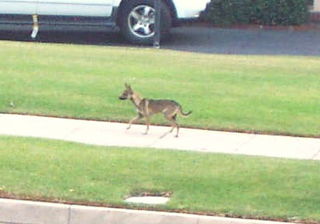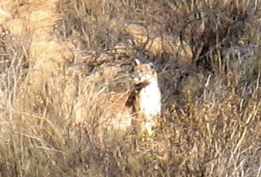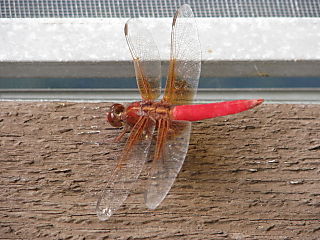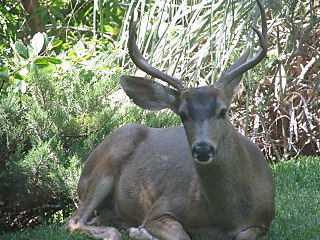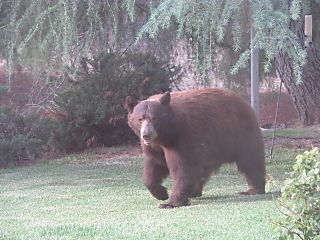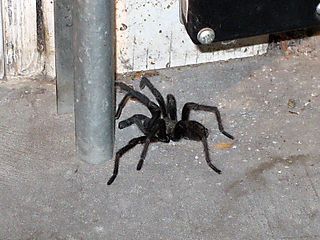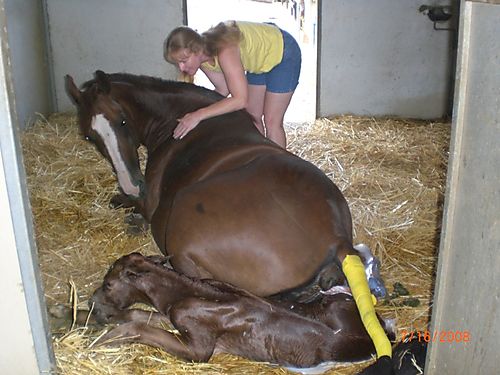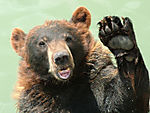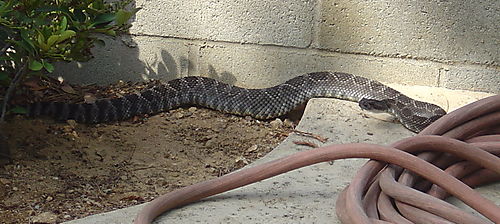Just got this note from JPL's Alice Wesson today:
Dear Neighbors:
At 8:15AM Friday July 25, 2008, one of my staff observed a woman
walking the fire road found alongside JPL’s east parking lot. The
woman was observed beating off a coyote that was trying to attack her
dog. The coyote had froth around its mouth. Dog and woman are fine,
if shaken up. The coyote was observed running away towards the area
north-west of Florecita Farms/Meadows area.
I called Pasadena Humane and made a report and JPL security who made a report to forestry.
Please use appropriate caution when in the area. Wildlife are always here. We live in "their" territory.
From U.S. Department of Agriculture's website
Here are some steps you can take to reduce the chance of human-coyote conflicts:
Do not feed coyotes!
• Eliminate sources of water, particularly in dry climates.
• Bird feeders should be positioned so that coyotes can't get the
feed. Coyotes are attracted by bread, table scraps, and even seed.
They may also be attracted by birds and rodents that come to the
feeders.
• Do not discard edible garbage where coyotes can get to it.
• Secure garbage containers and eliminate garbage odors.
• Feed pets indoors whenever possible. Pick up any leftovers if
feeding outdoors. Store pet and livestock feed where it is
inaccessible to wildlife.
• Trim and clean, near ground level, any shrubbery that provides hiding cover for coyotes or prey.
• Fencing your yard could deter coyotes. The fence should be at
least 6 feet high with the bottom extending at least 6 inches below
ground level for best results.
• Don't leave small children unattended outside if coyotes have been frequenting the area.
• Don't allow pets to run free. Keep them safely confined and
provide secure nighttime housing for them. Walk your dog on a leash
and accompany your pet outside, especially at night. Provide secure
shelters for poultry, rabbits, and other vulnerable animals.
• Discourage coyotes from frequenting your area. If you start
seeing coyotes around your home or property, chase them away by
shouting, making loud noises or throwing rocks.
These steps may decrease the frequency of coyote sightings in your area
if practiced continuously. However, coyotes are adaptable to change
and are quick to learn new ways of survival. Occasional sightings
most likely will continue. By making life for coyotes in your
neighborhood more difficult, you will increase the likelihood that they
will go somewhere else.
For further information please visit:
http://www.dfg.ca.gov/education/living.html
What to do if you have potential rabies exposure:
http://www.cdc.gov/rabies/exposure/types.html
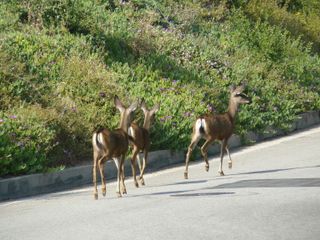 At about 5:05 three deer traveled west to east
on Pinecrest Drive and stopped in front of Noyes Elementary School for a few
minutes. I took several pictures then ran to get my grandson, but they
were gone when I returned. Thought you might be interested. This is
the first incident like this I can recall in the 37 years we have been
here.
At about 5:05 three deer traveled west to east
on Pinecrest Drive and stopped in front of Noyes Elementary School for a few
minutes. I took several pictures then ran to get my grandson, but they
were gone when I returned. Thought you might be interested. This is
the first incident like this I can recall in the 37 years we have been
here. 


